- Home
- Lewis Carroll
Jabberwocky and Other Nonsense Page 4
Jabberwocky and Other Nonsense Read online
Page 4
The Lewis Carroll Picture Book. A Selection from the Unpublished Writings and Drawings of Lewis Carroll, together with reprints from scarce and unacknowledged work, ed. Stuart Dodgson Collingwood (London: T. Fisher Unwin, 1899) (Collingwood)
Lewis Carroll’s Games and Puzzles, compiled and ed. Edward Wakeling (New York: Dover, 1992)
The Magic of Lewis Carroll, ed. John Fisher (Harmondsworth: Penguin, 1975) (Fisher)
The Mathematical Recreations of Lewis Carroll: “Pillow Problems” and “A Tangled Tale” (New York: Dover, 1958)
The Pamphlets of Lewis Carroll: The Oxford Pamphlets, Leaflets, and Circulars of Charles Lutwidge Dodgson, compiled, with notes and annotations by Edward Wakeling, vol. 1 (Charlottesville: University Press of Virginia for the Lewis Carroll Society of North America, 1993) (Pamphlets)
Rediscovered Lewis Carroll Puzzles, compiled and ed. Edward Wakeling (New York: Dover, 1995)
Under the Quizzing Glass: A Lewis Carroll Miscellany, ed. R. B. Shaberman and Denis Crutch (London: Magpie Press, 1972)
Related works
A Century of Parody and Imitation, ed. Walter Jerrold and R. M. Leonard (Oxford: Oxford University Press, 1913)
The Poets and Poetry of the Century: Humour, Society, Parody and Occasional Verse ed. Alfred H. Miles (London: Hutchinson, 1894)
The Tenth Rasa: An Anthology of Indian Nonsense, ed. Michael Heyman with Sumanyo Satpathy and Anuschka Ravishankar (New Delhi: Penguin Books India, 2007)
Some further suggestions
Morton N. Cohen, Lewis Carroll: A Biography (London: Macmillan, 1995)
Stuart Dodgson Collingwood, The Life and Letters of Lewis Carroll (London: T. Fisher Unwin, 1898)
Eleanor Cook, Enigmas and Riddles in Literature (Cambridge: Cambridge University Press, 2006)
Richard Foulkes, Lewis Carroll and the Victorian Stage: Theatricals in a Quiet Life (London: Ashgate, 2005)
Martin Gardner, The Universe in a Handkerchief: Lewis Carroll’s Mathematical Recreations, Games, Puzzles, and Word Plays (Berlin: Springler-Verlag, 1996) (Gardner, Universe)
Karoline Leach, In the Shadow of the Dreamchild: The Myth and Reality of Lewis Carroll, 2nd edition (London: Haus, 2009)
Robin Wilson, Lewis Carroll in Numberland: his fantastical mathematical logical life; an agony in eight fits (London: Allen Lane, 2008)
Jenny Woolf, Lewis Carroll: discovering the whimsical, thoughtful and sometimes lonely man who created “Alice in Wonderland” (London: Haus, 2010) (Woolf)
Note on the Texts
Carroll paid scant heed to the authority of cold print. He was always revising his poems, tweaking this line or that, sometimes writing in or taking out whole sections, as he did with “Hiawatha’s Photographing”. He was also quaintly attached to certain poems and had no compunction in publishing them again and again in different collections: so for example, the poem called “The Dream of Fame” appeared first in the magazine College Rhymes in 1861 and then, retitled as “Three Sunsets”, in Phantasmagoria (1869) and with only minor changes as the title poem in Three Sunsets (1898). When we reach the late-verse volumes Rhyme? And Reason? and Three Sunsets, they turn out to contain a very great deal of earlier work. One motive for this republication seems to have been his wish to keep his more serious poems current. This persistent revising and republication means that there can be no single “authoritative” version of the poems. That impossibility may be appropriate to Carroll’s unsettled and unsettling creativity though it makes for problems for the editor.
This is not a variorum edition where every nuance and turn of revision is recorded, so the reader may find a well-known poem suddenly turning strange. Where there are large differences between versions I have noted them, and in two cases I have included both versions entire, as with “She’s All My Fancy Painted Him”. I have turned to Carroll’s own collections of his poetry as my main source for those poems that were published during his lifetime, but of course that does not do away with variants, especially as some poems snake through from collection to collection. On the other hand, the juvenilia were not published until the twentieth century.
I have taken the first edition of Phantasmagoria (1869) as copy-text for all the poems gathered in that volume, many of which had already been published elsewhere earlier in magazines, often in somewhat different versions. But 1869 is a useful mid-point for his oeuvre, falling as it does between the publication of Alice’s Adventures in Wonderland (1865) and Through the Looking-Glass, and What Alice Found There (1872). More importantly, Phantasmagoria gathers together the poems that Carroll valued up to that date, in the version that he then preferred. Some poems published there turn up again, revised, in the late collections Rhyme? And Reason? and Three Sunsets, as I have indicated in the Notes.
Since the poems come from many sources, mostly printed, house styling has been standardised for the reader’s enjoyment. Carroll’s own notes for a poem follow it rather than being printed as footnotes (some are very long, e.g. “The Elections to The Hebdomadal Council” – where the note numbers were in square brackets and preceded final punctuation); spelling is regularised (grey/gray, recognise/recognize); an extra space before some punctuation is omitted; quotation marks are doubles (with singles inside as needed); dashes are spaced N-dashes, with longer dashes for emphasis; Carroll’s hyperapostrophes in contractions are omitted (e.g. wo’n’t, ca’n’t).
In his later years many of the fresh springs for his verse were friendship and the entertainment of particular people. So it is in letters or on the flyleaves of his books that most of the new poems appear, outside Sylvie and Bruno and Sylvie and Bruno Concluded. Because many of the poems were written to an occasion or a person they pop up like mushrooms, and for that reason also this is a Collected Poems, not a Complete Poems. There is now a wonderful ten-volume edition of the Diaries, edited with extensive notes by Edward Wakeling, but four volumes of Carroll’s early diaries are simply not extant. The two-volume edition of the Letters, edited by Morton Cohen in 1979, does not attempt completeness though it is invaluable for what it does contain. Evelyn Hatch’s 1933 selection from among the letters that Carroll wrote to his child-friends includes a number of further poems and also has the value that she had been one of his child-friends and can contextualize the letters in a particular way. Further collections such as that of Carroll’s nephew Stuart Dodgson Collingwood, The Lewis Carroll Picture Book (1899), yield more verses and there are occasional verses scattered in libraries and private collections. This is particularly true of the small gifts of acrostics and riddles. This edition is drawn entirely from printed sources, as listed in the Further Reading. All illustrations are from my collection. I am grateful to the Trustees of the Estate of C. L. Dodgson and to A. P. Watt as their agent, for their permission to use for this edition all those poems still in copyright.
I must also express my gratitude for the work of all those scholars past and present whose endeavours make an edition such as this possible: above all, the editors of the original and the two subsequent revisions of the invaluable Lewis Carroll Handbook, Sidney Herbert Williams, Falconer Madan, Roger Lancelyn Green and Denis Crutch (1931, 1970, 1979); Morton N. Cohen; the work of Martin Gardner in The Annotated Alice (Definitive Edition, 2000) and elsewhere; the editor of Lewis Carroll Among His Books, Charlie Lovett (2005); and Edward Wakeling, whom I also thank most warmly for his individual advice and information.
I am grateful to the Librarians of Cambridge University Library, the Sterling Library and the Beinecke Library at Yale University, the British Library, Christ Church Library, the Houghton Library of Harvard University, and the Berol Collection at the Fales Library, New York University. The Yale Center for British Art has been a most hospitable and inspiring base for much of the research I have conducted on Lewis Carroll over the past five years and I am particularly grateful to Director Amy Meyers and Associate Director of Research Lisa Ford, as I am to my son Zachary Beer for his comments and support.
The edition is dedicated
to our grandchildren, Sam, Ella and Sophia, with love.
Frontispiece to The Rectory Umbrella
Poems from Family Magazines
Useful and Instructive Poetry (1845)
My Fairy
I have a fairy by my side
Which says I must not sleep,
When once in pain I loudly cried
It said “You must not weep.”
If, full of mirth, I smile and grin,
It says “You must not laugh,”
When once I wished to drink some gin,
It said “You must not quaff.”
When once a meal I wished to taste
[10] It said “You must not bite,”
When to the wars I went in haste,
It said “You must not fight.”
“What may I do?” At length I cried,
Tired of the painful task,
The fairy quietly replied,
And said “You must not ask.”
Moral: “You mustn’t.”
The Headstrong Man
There was a man who stood on high,
Upon a lofty wall;
And every one who passed him by,
Called out “I fear you’ll fall.”
Naught heeded he of their advice,
He was a headstrong youth,
He stood as if fixed in a vice,
Or like a nail forsooth.
While thus he stood a wind began,
[10] To blow both long and loud,
And soon it blew this headstrong man,
Right down among the crowd.
Full many a head was broken then,
Full many an arm was cracked,
Much they abused headstrong men,
Who sense and wisdom lacked.
For this mishap he cared naught,
As we shall shortly see,
For the next day, as if in sport,
[20] He mounted in a tree.
The tree was withered, old, and grey,
And propped up with a stake,
And all who passed him by did say,
“That branch you’re on will break.”
Naught heeded he of their advice,
He was a headstrong youth,
He stood as fixed in a vice,
Or like a nail forsooth.
While thus he stood the branch began
[30] To break, where he did stand,
And soon it dropped this headstrong man
Into a cart of sand.
The sandman vainly sought for him,
For half an hour or more,
At last he found him in a trim
He ne’er was in before.
For sand his face did nearly hide,
He was a mass of sand:
Loud laughed the sandman when he spied
[40] The branch where he did stand.
“Why, what a foolish man thou art,
To stand in such a place!”
Then took some sand from out his cart,
And flung it in his face.
All wrathful then was sandy-coat,
Wrath filled his sandy eye,
He raised his sandy hand and smote,
The sandman lustily.
Full soon upon the ground he lay,
[50] Urged by the sandman’s fist,
These words were all that he could say,
For those to hear who list.
Moral:
‘If headstrong men will stand like me,
Nor yield to good advice,
All that they can expect will be,
To get sand in their eyes.”
Punctuality
Man naturally loves delay,
And to procrastinate;
Business put off from day to day,
Is always done too late.
Let every hour be in its place
Firm fixed, nor loosely shift,
And well enjoy the vacant space,
As though a birthday gift.
And when the hour arrives, be there,
[10] Where’er that “there” may be;
Uncleanly hands or ruffled hair
Let no one ever see.
If dinner at “half past” be placed
At “half past” then be dressed,
If at a “quarter past” make haste
To be down with the rest.
Better to be before your time,
Than e’er to be behind;
To ope the door while strikes the chime,
[20] That shews a punctual mind.
Moral:
“Let punctuality and care
Seize every flitting hour,
So shalt thou cull a floweret fair,
E’en from a fading flower.”
Charity
While once in haste I crossed the street,
A little girl I saw,
Deep in the mud she’d placed her feet,
And gazed on me with awe.
“Dear sir,” with trembling tone she said,
“Here have I stood for weeks,
And never had a piece of bread,”
Her tears bedewed her cheeks.
“Poor child!” said I, “do you stand here,
[10] And quickly will I buy,
Some wholesome bread and strengthening beer,
And fetch it speedily.”
Off ran I to the baker’s shop,
As hard as I could pelt,
Fearing ’twas late, I made a stop,
And in my pocket felt.
In my left pocket did I seek,
To see how time went on,
Then grief and tears bedewed my cheek,
[20] For, oh! My watch was gone!
Moral: “Keep your wits about you.”
Melodies
I
There was an old farmer of Readall,
Who made holes in his face with a needle,
They went far deeper in,
Than to pierce through the skin,
And yet strange to say he was made beadle.
II
There was an eccentric old draper,
Who wore a hat made of brown paper,
It went up to a point,
Yet it looked out of joint,
The cause of which he said was “vapour.”
III
There was once a young man of Oporta
Who daily got shorter and shorter,
The reason he said
Was the hod on his head,
Which was filled with the heaviest mortar.
His sister named Lucy O’Finner,
Grew constantly thinner and thinner,
The reason was plain,
She slept out in the rain,
And was never allowed any dinner.
A Tale of a Tail
An aged gardener gooseberries picked,
From off a gooseberry tree;
The thorns they oft his fingers pricked
Yet never a word said he.
A dog sat by him with a tail,
Oh! such a tail! I ween,
That never such in hill or dale,
Hath hitherto been seen.
It was a tail of desperate length,
[10] A tail of grizzly fur,
A tail of muscle, bone and strength
Unmeet for such a cur.
Yet of this tail the dog seemed proud
And ever and anon,
He raised his head, and barked so loud,
That tho’ the man seemed something cowed,
Yet still his work went on.
At length in lashing out its tail,
It twisted it so tight,
[20] Around his legs, ’twas no avail,
To pull with all its might.
The gardener scarce could make a guess,
What round his legs had got,
Yet he worked on in weariness,
Although his wrath was hot.
“Why, what’s the matter?” he did say,
“I can’t keep on my feet,
; Yet not a glass I’ve had this day
Save one, of brandy neat.
[30] “Two quarts of ale, and one good sup,
Of whiskey sweet and strong,
And yet I scarce can now stand up,
I fear that something’s wrong.”
His work reluctantly he stopped,
The cause of this to view,
Then quickly seized an axe and chopped,
The guilty tail in two.
When this was done, with mirth he bowed,
Till he was black and blue,
[40] The dog it barked both long and loud,
And with good reason too.
Moral: “Don’t get drunk.”
A quotation from Shakespeare with slight improvements
Warwick. Wil’t please your grace to go along with us?
Prince. No I will sit and watch here by the king.
[Exeunt all but Prince Harry.]
“Why doth the crown lie there upon his pillow
Being so troublesome a bedfellow?
Oh polished perturbation! golden care!
That keepst the ports of slumber open wide
To many a watchful night – sleep with it now!
Yet not so sound, and half so deeply sweet,
As he whose brow with homely biggin bound
Snores out the watch of night.”
[10] King. Harry I know not
The meaning of the word you just have used.
Prince. What word, my liege?
King. The word I mean is “biggin.”
Prince. It means a kind of woollen nightcap, sir,
With which the peasantry are wont to bind
Their wearied heads, ere that they take their rest.
King. Thanks for your explanation, pray proceed.
Prince. “Snores out the watch of night. Oh majesty!
When thou dost pinch thy bearer thou dost sit
Like a rich armour, worn in heat of day
That scalds with safety.”
[20] King. Scalding ne’er is safe
For it produces heat and feverishness
And blisters on the parched and troubled skin.

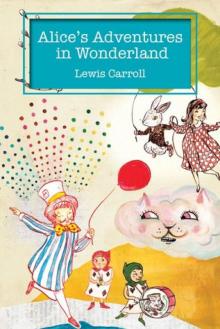 Alice's Adventures in Wonderland & Through the Looking-Glass
Alice's Adventures in Wonderland & Through the Looking-Glass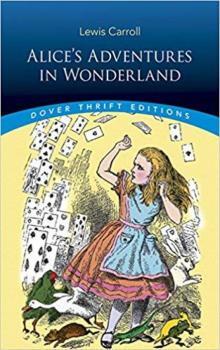 Alice's Adventures in Wonderland
Alice's Adventures in Wonderland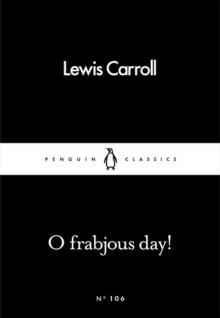 O Frabjous Day!
O Frabjous Day! Jabberwocky and Other Nonsense
Jabberwocky and Other Nonsense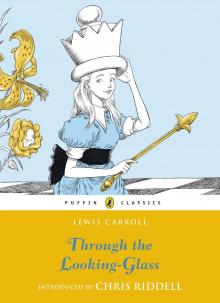 Through the Looking-Glass and What Alice Found There
Through the Looking-Glass and What Alice Found There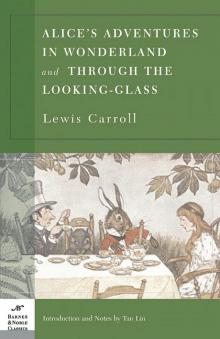 Alice's Adventures in Wonderland and Through the Looking Glass (B&N)
Alice's Adventures in Wonderland and Through the Looking Glass (B&N) Alice's Adventures in Wonderland and Through the Looking Glass (Barnes & Noble Cla
Alice's Adventures in Wonderland and Through the Looking Glass (Barnes & Noble Cla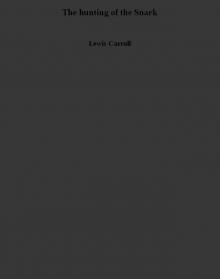 The hunting of the Snark
The hunting of the Snark The Complete Alice in Wonderland (Wonderland Imprints Master Editions)
The Complete Alice in Wonderland (Wonderland Imprints Master Editions)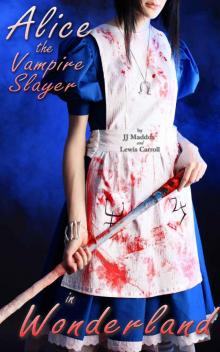 Alice in Wonderland: The Vampire Slayer
Alice in Wonderland: The Vampire Slayer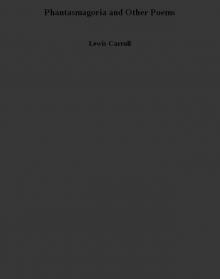 Phantasmagoria and Other Poems
Phantasmagoria and Other Poems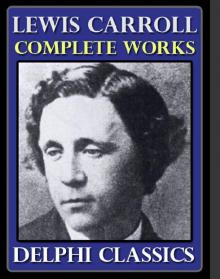 Complete Works of Lewis Carroll
Complete Works of Lewis Carroll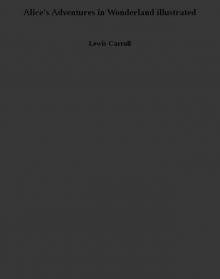 Alice's Adventures in Wonderland illustrated
Alice's Adventures in Wonderland illustrated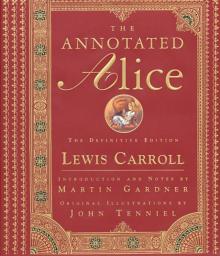 The Annotated Alice: The Definitive Edition (The Annotated Books)
The Annotated Alice: The Definitive Edition (The Annotated Books)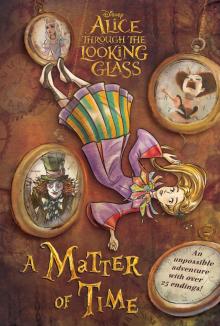 Through the Looking Glass
Through the Looking Glass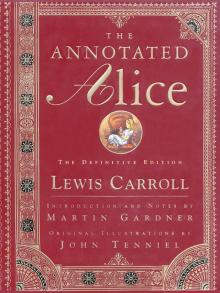 The Annotated Alice
The Annotated Alice Alice in Zombieland
Alice in Zombieland